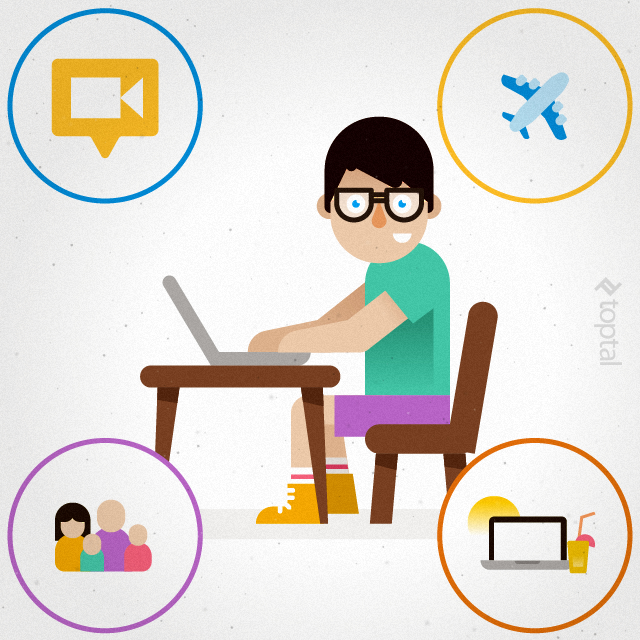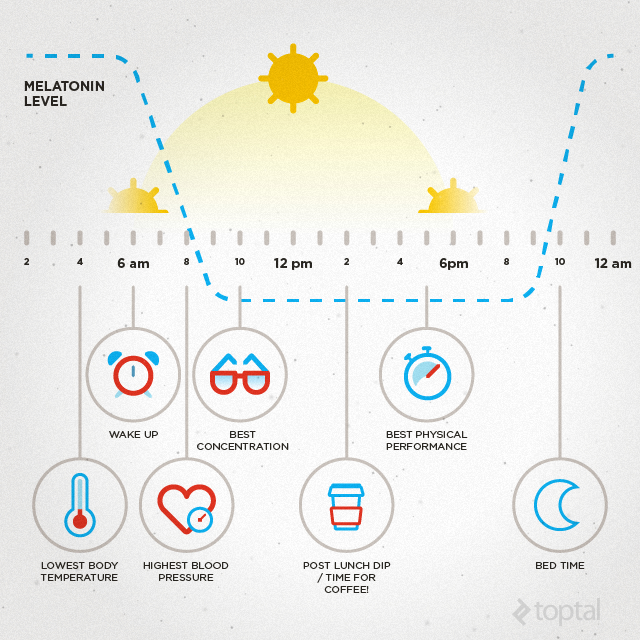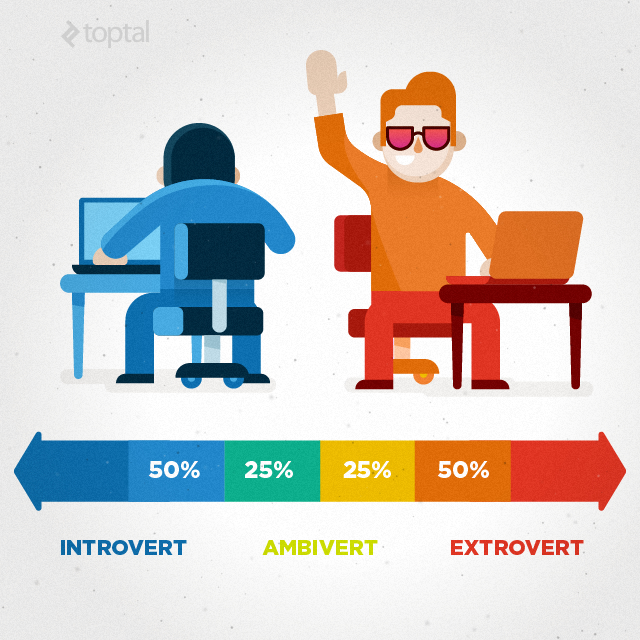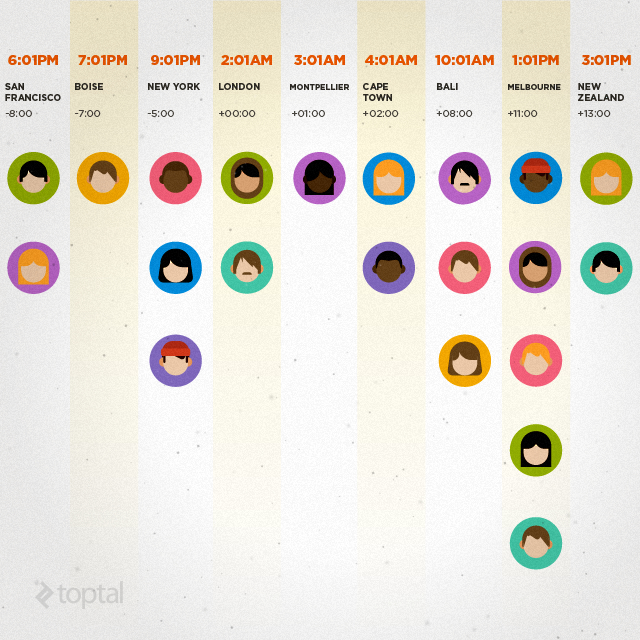This article was originally published on Toptal Engineering Blog.
One of the best parts of working remotely is the flexibility it provides. Perhaps the most obvious benefit of remote working for the employee or contractor is that you can work in a way that suits you. Very few on-site jobs provide the flexibility to work where, when, and how you want.
This is a double-edged sword, though. The more flexible your schedule, the more diligent you need to be about finding your own structure and setting boundaries for yourself where you need them.
Remote work comes with lots of things to take into account when designing your schedule, ranging from how you work, to your responsibilities to colleagues and those at home, to where you are geographically. Indeed, finding the right balance that works best for you can be tricky.

For many remote workers, the freedom that comes with an off-site role is part of what draws us to it. We love the opportunity of designing our own working schedule. But how do you know what suits you best?
What time do you work best?
Depending on your natural body clock, you may work well at 2am, 6pm, or 9am. You might have a natural dip in energy in the early afternoon (many of us do), or you might find your energy tanks after dinner (mine does).
Everyone’s body clock is different, but most of us fall into one of three categories, known as chronotypes:
- Morning larks: Also known as early birds, these people prefer to get up early and go to bed early. New Scientist reports about 10% of people fit into this category.
- Night owls: At the other extreme, these people like to sleep in and go to bed late, usually after midnight. Around 20% of us are night owls.
- In-between: The rest of us (the vast majority) fit somewhere in-between these two ends of the spectrum.
A morning lark’s day, for example, might look something like this:

Night owls would experience a similar day, only it would be shifted later by a few hours.
If you’re a night owl trying to fit into a 9-5 job, you’re going to have a tough time. On the other hand, morning larks struggle to stay up late and won’t be as productive if they’re required to work at night.
Understanding how your body clock works will help you find your most productive times, lowest energy dips during the day, and best hours for sleeping.
If you’re a morning lark, you’ll want to set aside your morning hours for focused, uninterrupted work time. Night owls will probably want to save their evening hours for the same thing.
You might not fit the extreme ends of this scale, but even discovering that you’re most alert and focused late in the morning rather than right at 9am when you start work can be a useful insight. You might try starting your workday later and finishing later to take advantage of your natural peak, or starting with low-energy work like catching up on meetings and emails before starting your most important work just before lunch.
Where do you work best?
When all you need to be productive is a good internet connection, you can find so many places to work. You can even get good work done in a park with mobile internet. There aren’t many people I know who work in an office and regularly take time out to work in the park for an afternoon.
Remote working gives you the freedom to find a space that suits you best or to move between spaces throughout the day if that’s your thing (Joel Runyon calls this Workstation Popcorn, and swears by it for increased productivity). If you’re lucky enough to have a co-working space or great cafe with WiFi nearby, you can enjoy the benefits of working around other people. Or, if you prefer peace and quiet, you could rent an office (shared office suites are available almost everywhere nowadays) or set yourself up with a workspace at home.
If you like working with particular gear, such as a second screen, your own sound system, a comfy chair, or a certain keyboard, you can set up the best workspace in your own office without needing to worry about affecting other people. Or, if you prefer moving around with little more than a laptop and a pair of headphones, you can enjoy the more nomadic working style of switching to a new space every day.
How do you work best?
While most of us fit somewhere in the middle of the introvert-extrovert scale, those of us who lean more towards one side or the other feel this difference acutely in our workspace.

If you’re quite introverted, being around other people drains your energy, and you need time alone to recharge. Working in a loud, open office can be terrible for an introvert’s well-being and productivity.
On the other hand, extroverts draw energy from being around other people, and tend to feel drained from spending too much time alone. Working from home with no interpersonal interaction all day might drive an extrovert crazy with frustration and boredom. (Google Hangouts can help here, but there’s nothing the same as direct in-the-same-room interaction.)
Understanding where you fit on this scale can make a huge difference to how well you set up your workspace and schedule. For instance, an introvert might try to schedule meetings or calls for low-energy periods in the day, or at the end of the day when there’s not much high-effort work left to focus on. For an extrovert, starting the day with meetings and calls could be a huge boost to their energy and help them be much more productive for the rest of the day.
If you’re not sure where you are on the introvert-extrovert scale, try this test to get an idea of where you sit. You can then use this information to guide you in perfecting a schedule that suits your energy requirements best.
How does your remote team work?
Whether you work in a team or independently, there will be times that you’ll need to coordinate with other people. Although remote work gives you the freedom to design a schedule that suits you, you’ll also need to take into account the schedules of the others who you need to interact with.
When your team is distributed around the world, this also means taking into account time zones. A good way to deal with this is to find a time of schedule overlap with remote colleagues that generally works well for all involved.
For instance, you might make a note that one colleague is usually available to chat with you between 10am and Noon your time, and a second colleague is usually available between 4 and 5pm your time. You can then attempt to arrange your meetings with them accordingly.
The flexibility of working remotely can mean you’re free to change your working hours whenever you need to, whether to help a friend move, make an appointment during business hours, or spend time with family. While I love this difference compared to having set office hours when you need to be present, I also know this can make things tricky for your colleagues, who can’t always assume that you’re available.
This is why having a period of time – even just a couple of hours – when you’re usually available, and letting your team members know this, can be a great way to balance your schedule and your commitment to the team. As with many things, communication is key.
And of course, technology can help as well. I like to use a Mac menubar app called Clocks to keep track of all the time zones I interact with often. At Buffer, one of their developers created an internal tool to show which team members are in each time zone and what their local time is to make it even easier to keep track of everyone.

Your personal life and lifestyle
There’s something really special about how the flexibility of remote working affects your home life. If you manage it well, you can fit in more time with your family and friends, be there for the most important moments of their lives, and find a way for your work to support the rest of your life, rather than taking away from it.
Another great thing about working remotely is how it can support you while you travel. If you want to see more of the world, working while you travel is a great way to do it. When you work remotely, you can make work fit around your schedule so you can see the places you visit and make the most of your travel experiences while still maintaining your commitment to your team.
Buffer CEO Joel Gascoigne wrote about his experience traveling and working recently. After seeing 11 cities in 3 months, Joel decided a slower pace would suit his lifestyle better:
Being in a new place means adjusting to many new things, even as simple as finding grocery shopping and food places. Everything takes a little longer than what you have become used to in a place you have had months or years to become familiar and comfortable with, and that can be a little frustrating if you don’t anticipate it.
Joel’s now spending longer periods in each place he visits in an attempt to build stronger friendships around the world, see more of each place he travels to, and maintain a more productive workflow:
Since choosing to adjust to slow travel (more on that below) and stay in Hawaii for 4-5 months, I have hit possibly my best flow in years, both in terms of my work on Buffer and my fitness goals.
Toptal co-founder Breanden Beneschott takes a similar approach to Joel’s new slower travel style. Breanden likes to stay around 3 months in each new place he visits for similar reasons to Joel: to more fully experience the culture, to get to know people in each place, and to help him get more done between traveling:
Power trips of 9 countries in 3 weeks are for students on holiday. You need to be able to stop traveling and focus on work.
Breanden also makes the point that longer stays are easier on your wallet, since you can often get a better deal for a medium-term stay in an apartment or for a vehicle lease.
Making it work for you
Balance is the biggest key to getting your remote working schedule just right. Taking all of the things we’ve discussed into account – and balancing them with one another – is tough, so I’d suggest working through one big area of focus at a time until you find what works for you and what doesn’t.
The fact that there’s no single “right answer” in terms of a remote working schedule means you have the opportunity to customize a schedule that helps you get the most out of life while staying productive and effectively supporting your colleagues.

